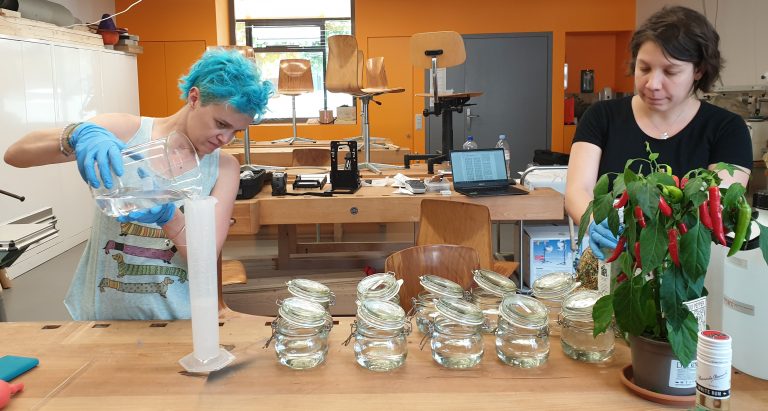Project description and aims
The aim of this project is to deepen the knowledge of conservation issues of botanical wet collections (plants in fluid) in order to propose adapted protocol for their correct preservation.
Investigation and conservation of botanical wet collections
From a material point of view, the correct combination of fixing procedures, preservation fluid, container and sealant for a long lasting specimen’s conservation will be investigated for various categories of plant species. From an immaterial point of view, part of the research will be dedicated to the investigation of the cultural values owned by these artefacts and the optimal way to maintain them in time.
Methodology
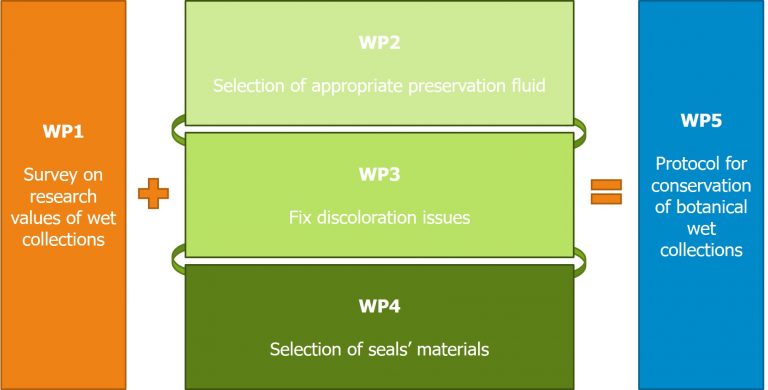
2021 Spring | The liquor project is blooming!
After a long winter, spring finally arrived with its colorful flowers; a great opportunity for us to put some well-known recipes, such as Wagstaffe Flower mixture, Copenhagen mixture, Kew mixture and Kaiserling to the test!
The Flowers
Verbenas and Lobelias a thriving throughout the month of May here in Switzerland. They embellish gardens and balconies with their beautiful red, purple and blue colors, thanks to the flavonoid pigments. Most of them are sensitive to pH variation, causing their color to change. They are contained inside the vacuole, which has a semi-permeable membrane that allows it to hold water as well as retaining other compounds, helping to protect and regulate the chemical balance inside the cell.
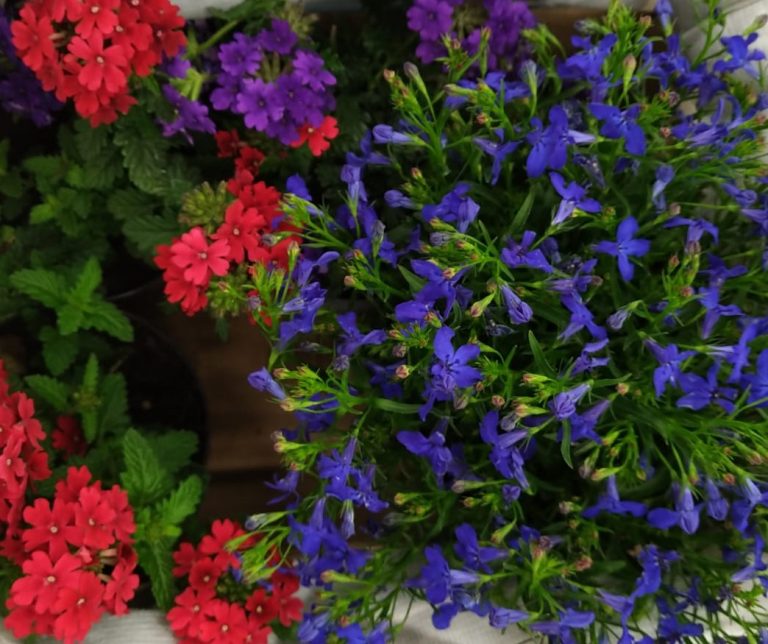
In this new set of tests, we aimed to see what would happen to the pigments of our specimen in different recipes. The color migration inside the fluid was regularly monitored by spectrocolorimetry. A week after the preparation, we looked at the specimens under a microscope to see what happened to a cellular level.
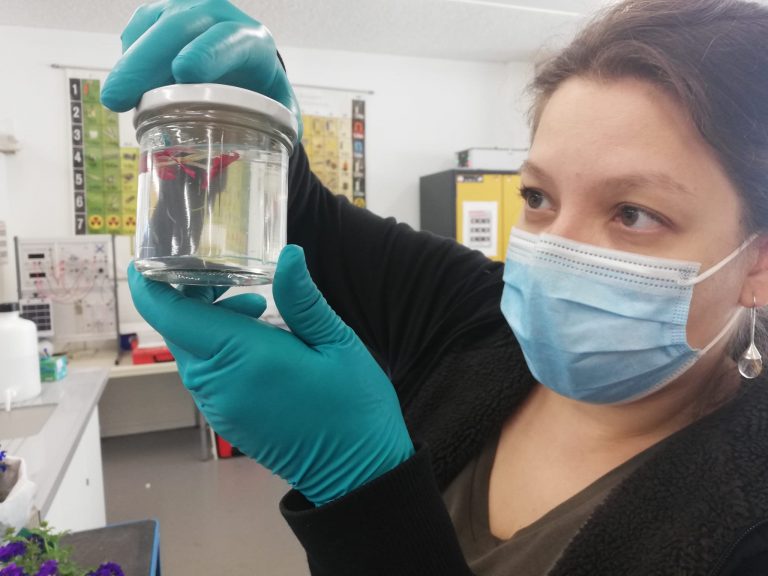
Some observations
These tests are still ongoing. Soon, a second batch of jars will be prepared, containing more finely-tuned recipes based on the first observations made on the first batch. Indeed, some historical recipes showed promissing results, but could be imprived in order to specifically preserve pigments.
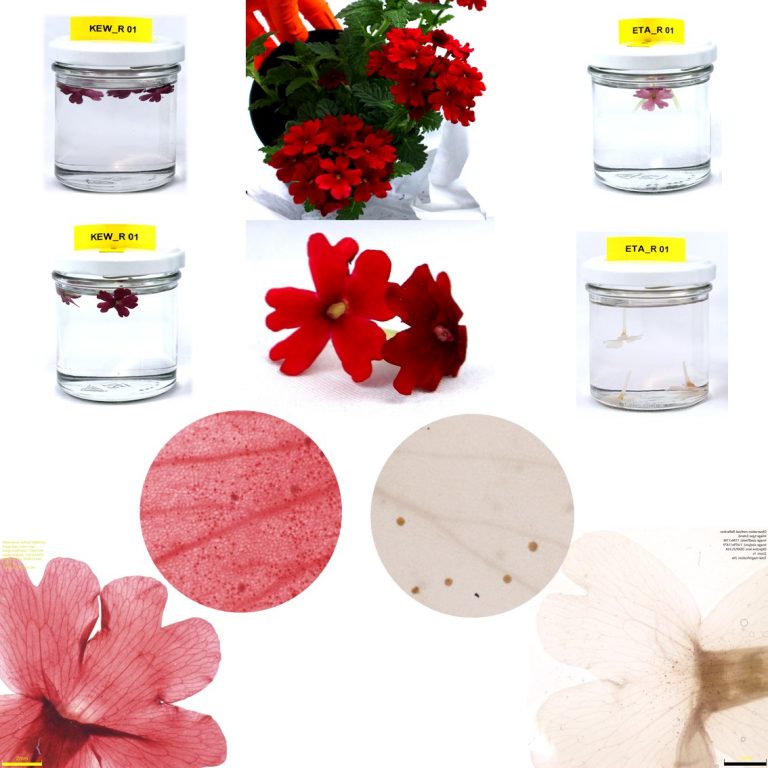
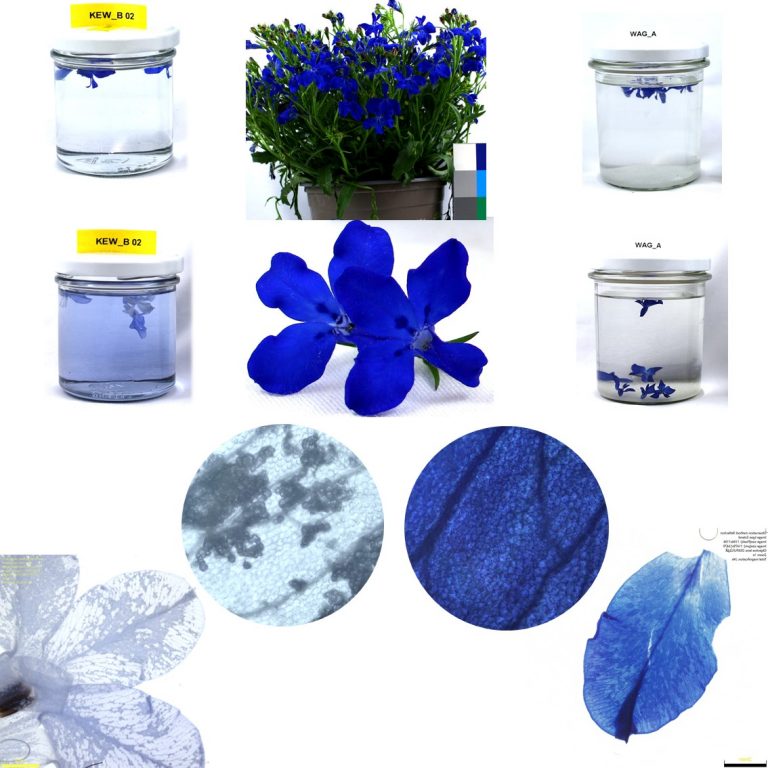
What happened since 2019?
march 2021 – EGR
In 2019, we prepared some samples in fluid reproducing botanical wet collections with the aim of studying the problem of specimens’ discoloration. Since then a lot has happened!
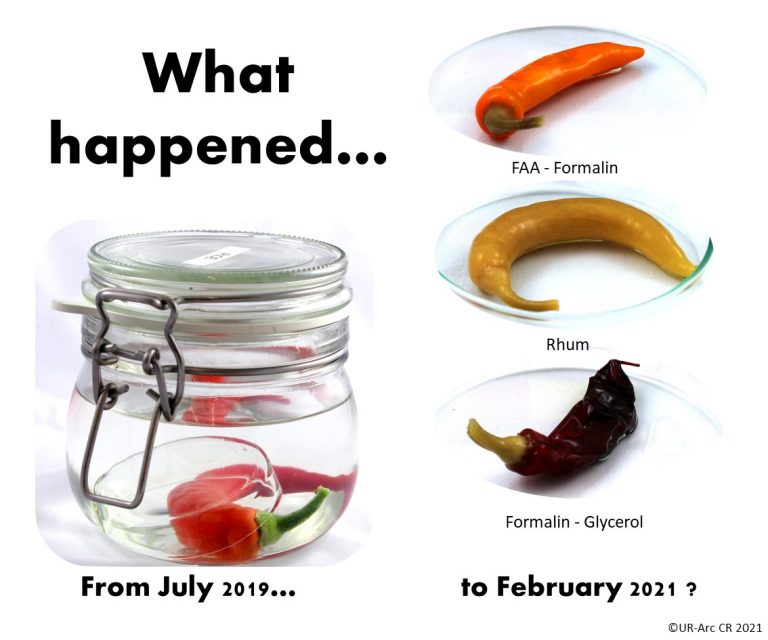
We have been monitoring our samples in jars regularly using imaging, colorimetric and spectroscopic techniques, and are now processing and interpreting those precious data. It apprears that distinct kind of plants reacts differently according to the fixing process and conservation fluid.
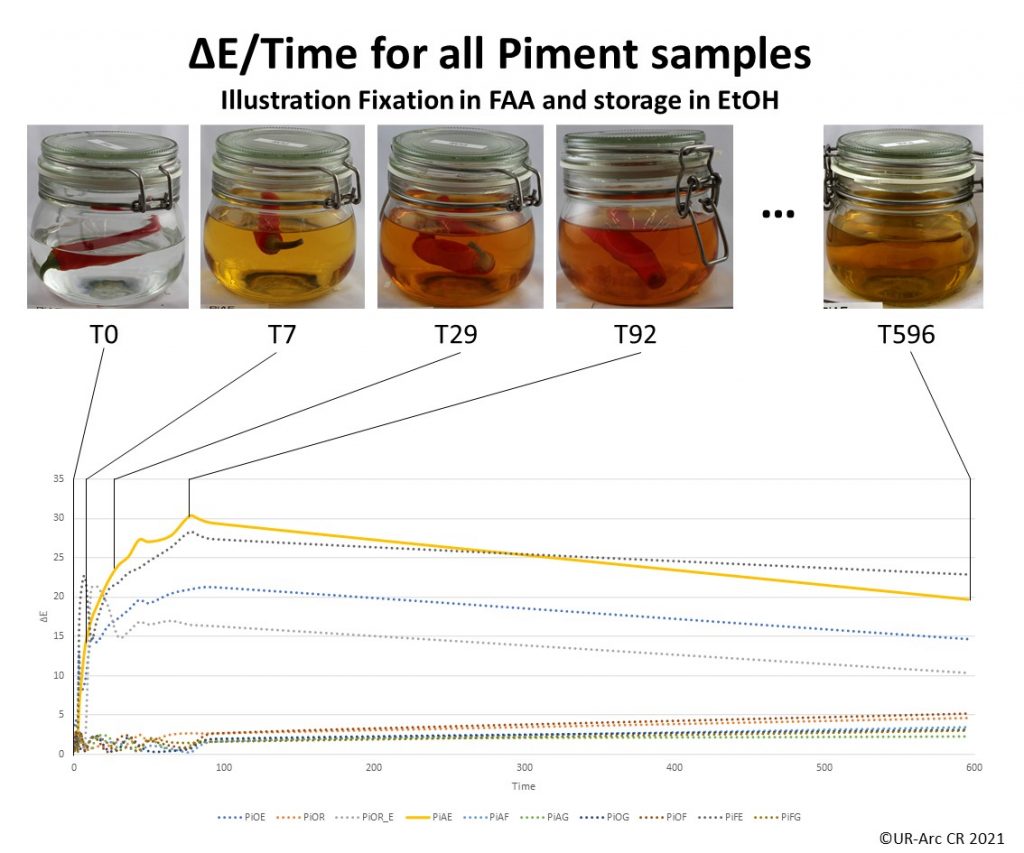
After 3-6 months, it was possible to observe as a general trend a progressive and continuous release of dyes in the liquid, rendering it darker and darker.
After 18 months, we could observe different alterations of the fluid as well as the specimen. Multiple color changes occurred in the fluid. Some fluids kept on getting darker while others began to lighten, suggesting a probable process of dye degradation.
The specimens suffered from divers morphological changes, depending on their preparation: Some experienced hardening, shrinkage, discoloration…
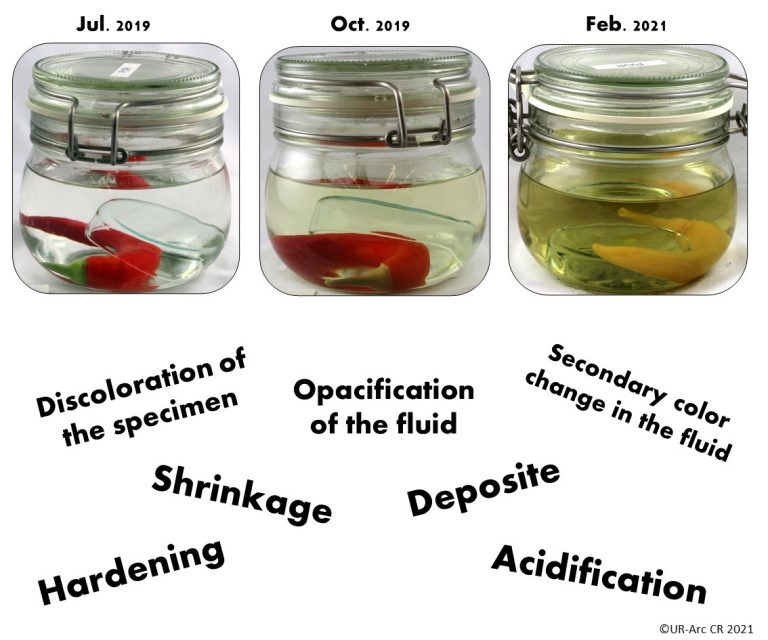
Publications
- Dangeon, M., Cornet, E., Brambilla, L., 2020. Conservation-Restoration of a Botanical Museum Fluid Collection: Practice and Research. Collection Forum 34, 143–156. https://doi.org/10.14351/0831-4985-34.1.143
- Granget, E., Dangeon, M., and Brambilla, L. 2022. Losing colour: the discolouration of plants in spirit
preserved collections. Journal of Natural Science Collections 10. 60-80.
- Latty, J., Granget, E., Dangeon, M., Brambilla, L. Prévenir le brunissement du fluide de conservation des spécimens botaniques. Bulletin de la société neuchâteloise des sciences naturelles 141. 25-39
Posters
20th ICOM-CC Triennial Conference, 18-22 September 2023, València, Spain
Conferences
- Natural Science Collections Association Conference, Twitter, January 21st 2021, #NatSCAConservation.
Link to the program of the conference.
- ICOM NatHIST Virtual Conference, Collections as a challenge for research, 13-15 September 2021.
Link to the page of the conference
- « Natural History Wet Collections – Symposium chair. SPNHC 2022, Edinburgh, Scotland, UK. June 5th – 10th June 2022.
Link to the page of the conference
- 20th ICOM-CC Triennial Conference, 18-22 September 2023, València, Spain

